Advances on the Amaryllidacea Alkaloids Collected in South Africa, Andean South America and the Mediterranean Basin
- PMID: 37241796
- PMCID: PMC10224442
- DOI: 10.3390/molecules28104055
Advances on the Amaryllidacea Alkaloids Collected in South Africa, Andean South America and the Mediterranean Basin
Abstract
The alkaloids are one of the most represented family of natural occurring biological active compounds. Amaryllidaceae are also very well known for their beautiful flower and are thus used as ornamental plants in historic and public gardens. The Amaryllidacea alkaloids constitute an important group that is subdivided into different subfamilies with different carbon skeletons. They are well known from ancient times for their long application in folk medicine, and in particular, Narcissus poeticus L. was known to Hippocrates of Cos (ca. B.C. 460-370), who treated uterine tumors with a formulate prepared from narcissus oil. To date, more than 600 alkaloids of 15 chemical groups exhibiting various biological activities have been isolated from the Amaryllidaceae plants. This plant genus is diffused in regions of Southern Africa, Andean South America and the Mediterranean basin. Thus, this review describes the chemical and biological activity of the alkaloids collected in these regions in the last two decades as weel those of isocarbostyls isolated from Amaryllidaceae in the same regions and same period.
Keywords: Amaryllidacea; Andean South America; Mediterranean regions; South Africa; alkaloids; biological activity; chemistry; secondary metabolites.
Conflict of interest statement
The author declares no conflict of interest.
Figures

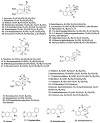
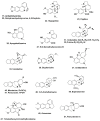
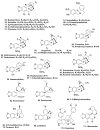
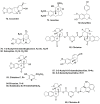
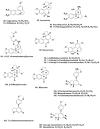

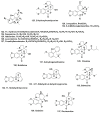


Similar articles
-
Amaryllidaceae alkaloids: Absolute configuration and biological activity.Chirality. 2017 Sep;29(9):486-499. doi: 10.1002/chir.22719. Epub 2017 Jun 26. Chirality. 2017. PMID: 28649696 Review.
-
Alkaloids of the South African Amaryllidaceae: a review.Nat Prod Commun. 2013 Sep;8(9):1335-50. Nat Prod Commun. 2013. PMID: 24273880 Review.
-
Advances in the Chemical and Biological Characterization of Amaryllidaceae Alkaloids and Natural Analogues Isolated in the Last Decade.Molecules. 2020 Nov 29;25(23):5621. doi: 10.3390/molecules25235621. Molecules. 2020. PMID: 33260413 Free PMC article. Review.
-
Simultaneous quantification and identification of Amaryllidaceae alkaloids in Narcissus tazetta by ultra performance liquid chromatography-diode array detector-electrospray ionisation tandem mass spectrometry.J Pharm Biomed Anal. 2019 Oct 25;175:112750. doi: 10.1016/j.jpba.2019.06.047. Epub 2019 Jul 2. J Pharm Biomed Anal. 2019. PMID: 31330284
-
Bioactive alkaloid extracts from Narcissus broussonetii: mass spectral studies.J Pharm Biomed Anal. 2012 Nov;70:13-25. doi: 10.1016/j.jpba.2012.05.009. Epub 2012 May 14. J Pharm Biomed Anal. 2012. PMID: 22673940
Cited by
-
Alkaloid Profile, Anticholinesterase and Antioxidant Activities, and Sexual Propagation in Hieronymiella peruviana (Amaryllidaceae).Plants (Basel). 2025 Jan 19;14(2):281. doi: 10.3390/plants14020281. Plants (Basel). 2025. PMID: 39861634 Free PMC article.
-
The Anti-Cholinesterase Potential of Fifteen Different Species of Narcissus L. (Amaryllidaceae) Collected in Spain.Life (Basel). 2024 Apr 22;14(4):536. doi: 10.3390/life14040536. Life (Basel). 2024. PMID: 38672806 Free PMC article.
References
-
- Meerow A.W., Snijman D.A. Amaryllidaceae. In: Kubitzki K., editor. The Families and Genera of Vascular Plants. Volume 3. Springer; Berlin/Heidelberg, Germany: 1998. pp. 83–110.
-
- Heywood V.H. Flowering Plants of the World. Oxford University Press; New York, NY, USA: 1993.
-
- Brochure by Washington State Tourism and Washington State Department of Agriculture. [(accessed on 24 January 2013)]; Available online: http://agr.wa.gov/Marketing/SmallFarm/docs/PierceCounty.pdf.
-
- Brochure by the Canadian Cancer Society. [(accessed on 24 January 2013)]. Available online: http://www.cancer.ca/ontario/about%20us/media%20centre/od-media%20releas....
Publication types
MeSH terms
Substances
LinkOut - more resources
Full Text Sources

